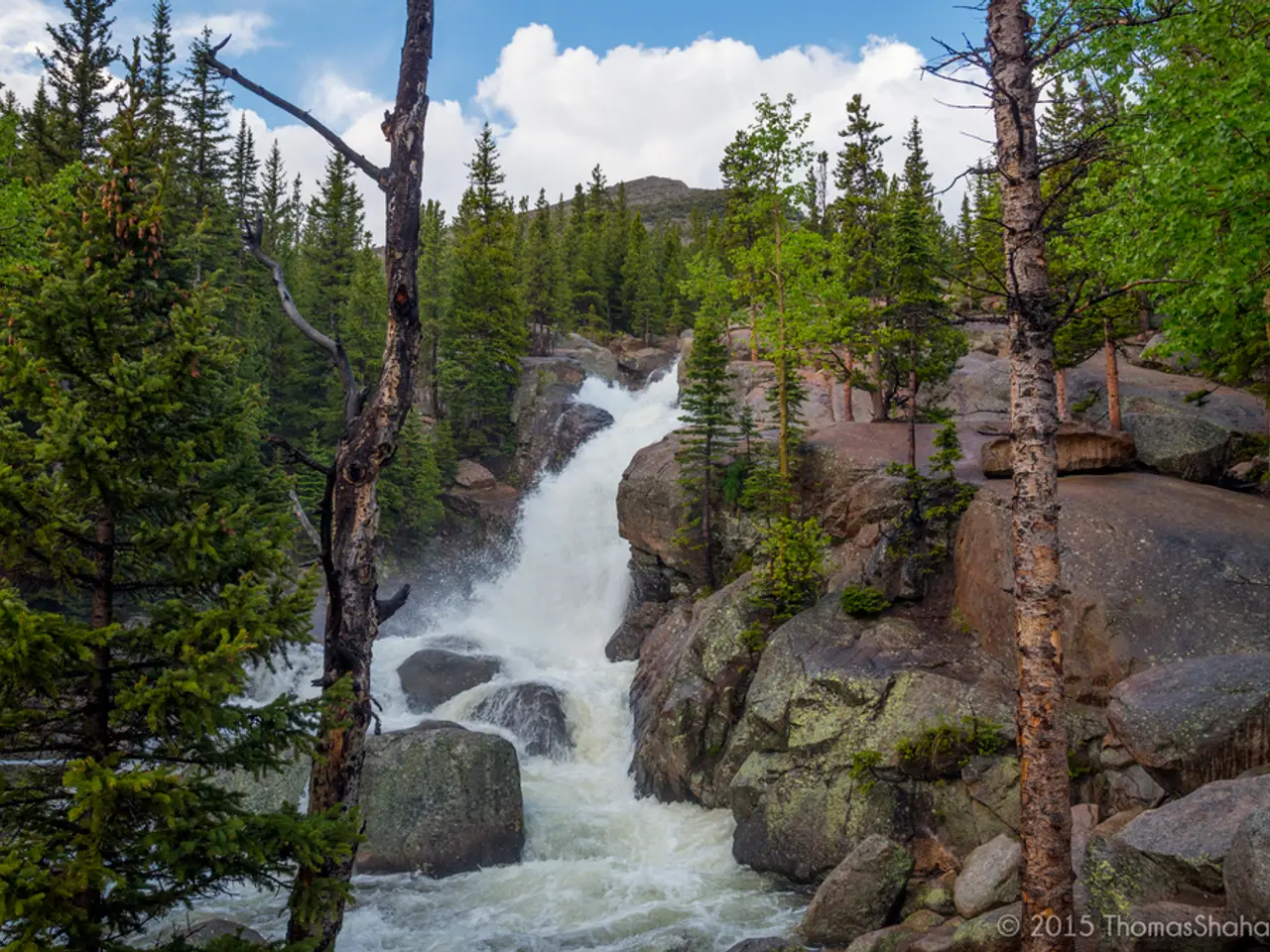Symptoms of altitude illness lead to evacuation of an eight-year-old from Bukreyev Peak, Almaty region
**Successful Mountain Rescue: Eight-Year-Old Boy Evacuated from Peak Bukreev**
In an impressive display of quick response and expert care, the Republic Operational Search and Rescue Team (ROSTO MCHS RK) of the Emergency Committee of Kazakhstan successfully evacuated an eight-year-old boy suffering from mountain sickness on July 13.
The young climber, who was part of a group of tourists attempting to summit Peak Bukreev at 3010 meters, began exhibiting symptoms of altitude sickness during the ascent. The child displayed rapid heartbeat, dizziness, and overall weakness, which are common symptoms in children and babies during high-altitude climbing.
As the rescuers traversed the challenging terrain of the Butakovsky Gorge, they navigated through rugged mountainous paths to reach the tourists' location. Upon finding them at 5:00 AM, the child was found to be sleeping and in a satisfactory condition, with his symptoms showing signs of improvement during the descent.
The rescuers accompanied one of the adult group members during their descent, ensuring a safe journey for both the child and the adult. The child was then safely delivered to the foot of the mountain, marking the successful completion of the evacuation.
While the specific details about the rescue services in Almaty's response were not available, it is common for such services to respond promptly to altitude sickness emergencies, especially during peak climbing seasons when the risk is higher. They typically perform evacuation or assisted descent of affected individuals to safer, lower altitudes, provide medical assessment and early treatment on-site or at mountain rescue stations, and coordinate with hospitals for further treatment if symptoms are severe.
In cases like this, it is crucial to recognize symptoms early, climb gradually, and seek immediate help when necessary. By staying hydrated, resting, and acclimatizing, and using medications like ibuprofen or acetaminophen for babies, climbers can manage mountain sickness effectively, even during challenging high-altitude climbs.
This incident serves as a reminder of the importance of preparation, education, and the swift action of rescue services in ensuring the safety of climbers in high-altitude environments.
**Common Symptoms of Mountain Sickness in Children and Babies:**
- Crying - Irritability - Lethargy - Headache - Nausea - Dizziness - Fatigue - Loss of appetite - Difficulty sleeping - Fussiness (in babies) - Vomiting (in babies)
**Treatment for Mountain Sickness in Children:**
- Hydration: Keep the child well-hydrated with milk, formula, or electrolyte solutions such as oral rehydration salts (ORS) - Medications: For babies, doctors may recommend ibuprofen or acetaminophen to reduce fussiness and restlessness. However, medications like acetazolamide, nifedipine, and dexamethasone are usually avoided due to unknown effects in infants. For older children and adults, acetazolamide can help with acclimatization but should be used under medical supervision. - Rest and acclimatization: Stopping ascent and resting at the current altitude allows the body to adjust. It’s advised to ascend gradually (about 300 meters at a time) and spend a day at each new altitude level before going higher. - Descent: If symptoms worsen or do not improve, descending to a lower altitude is the most effective treatment. - IV therapy: In some cases, especially for moderate symptoms, intravenous therapy delivering fluids, vitamins, and minerals can provide rapid relief within 30-60 minutes.
[1] Mayo Clinic. (2021). Altitude sickness. https://www.mayoclinic.org/diseases-conditions/altitude-sickness/symptoms-causes/syc-20368297 [2] WebMD. (2021). Altitude sickness: First aid. https://www.webmd.com/first-aid/altitude-sickness-first-aid [3] Healthline. (2021). Altitude sickness: Causes, symptoms, diagnosis, treatment, and prevention. https://www.healthline.com/health/altitude-sickness [4] American Academy of Pediatrics. (2021). Altitude sickness. https://www.healthychildren.org/English/health-issues/conditions/symptoms-and-causes/Pages/Altitude-Sickness.aspx
- In the realm of health and wellness, understanding common symptoms of medical-conditions like mountain sickness, such as headache, nausea, and dizziness, is essential for ensuring mental-health and safety during high-altitude fitness-and-exercise activities like mountain climbing.
- The swift response of the Republic Operational Search and Rescue Team (ROSTO MCHS RK) in evacuating an eight-year-old boy suffering from mountain sickness serves as a testament to the importance of medical care and emergency services in managing such health challenges during high-altitude activities.
- To maintain good mental-health and ensure safety during high-altitude fitness-and-exercise activities, it's crucial to follow best practices, including acclimatization, gradual climbing, and seeking immediate help when necessary, as well as proactively managing symptoms using recommended medications like ibuprofen or acetaminophen for children.




